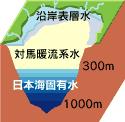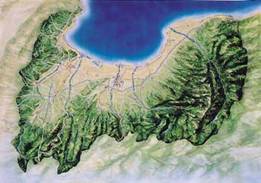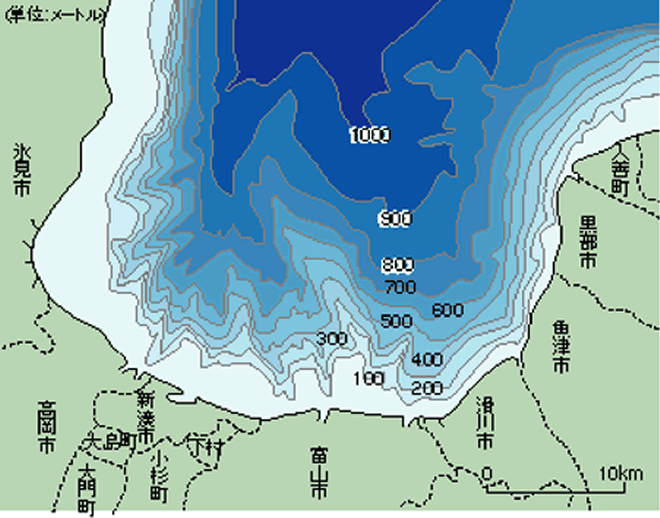What is Deep Seawater?

Water mass Structure of Toyama Bay


Deep seawater refers to seawater offshore passed the continental shelf that is too deep to be reached by sunlight. While no specific definition exists at this time, “deep seawater” generally refers to seawater at depths equal to or greater than 200 meters.
Toyama Bay has an approximate area of 2,120 km² and, at its deepest point dives to depths of 1,000 meters. It is in the same category as the Pacific Suruga and Sagami bays and is one of Japan’s deepest bays.
Toyama Bay consists generally of three parts: coastal surface water (water near the coast with low salinity due to an influx of river water), Tsushima warm current water (water at 200-300 meters below surface level), and Japan Sea Proper Water (low temperature water at 300 meters and deeper). There exists a limitless supply of this Japan Sea Proper Water, making up approximately 60% of Toyama Bay. It is this water that is called “deep seawater.”
Three major positive characteristics of deep seawater are its low-temperature stability, inorganic nutrient richness, and purity. Its low-temperature stability aspect is utilized in the cultivation of cold water aquafarming. Through this, we have been able to significantly eliminate costs related to the conventional method of aquafarming, which required the cooling of surface seawater.
Furthermore, deep seawater is receiving attention due to its balance of essential minerals including calcium and magnesium for use in health drinks and foods, pharmaceutical products, and other fields.
Industrial, academic, and government bodies are collaborating in research and development and commercialization activities to release the unlimited potential of deep seawater.